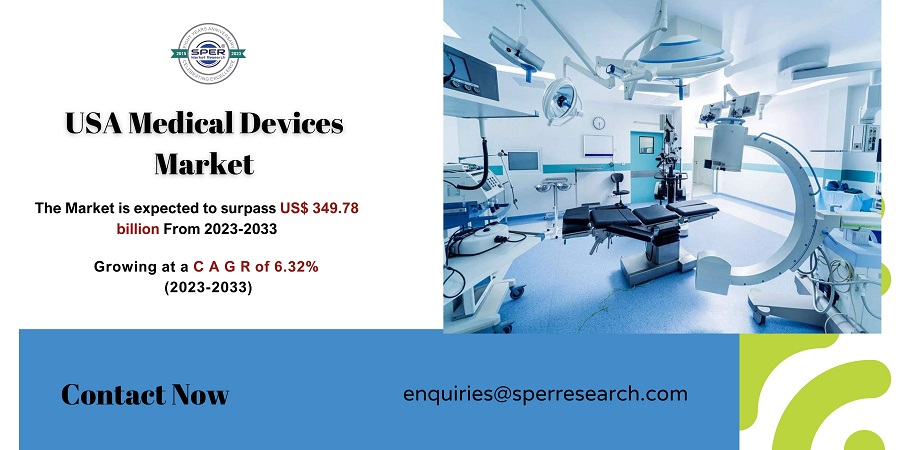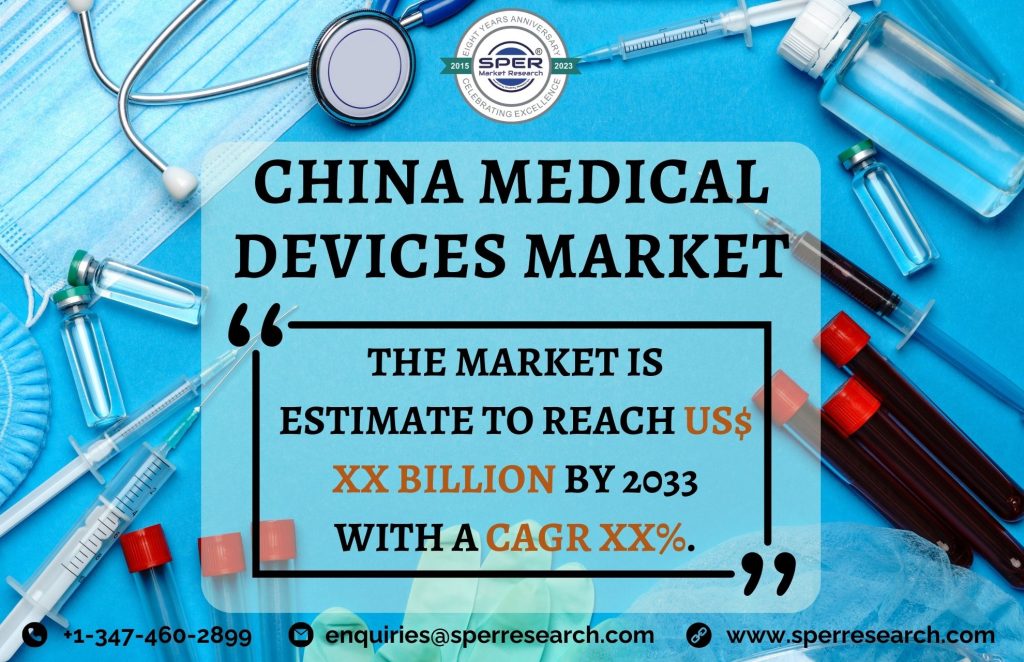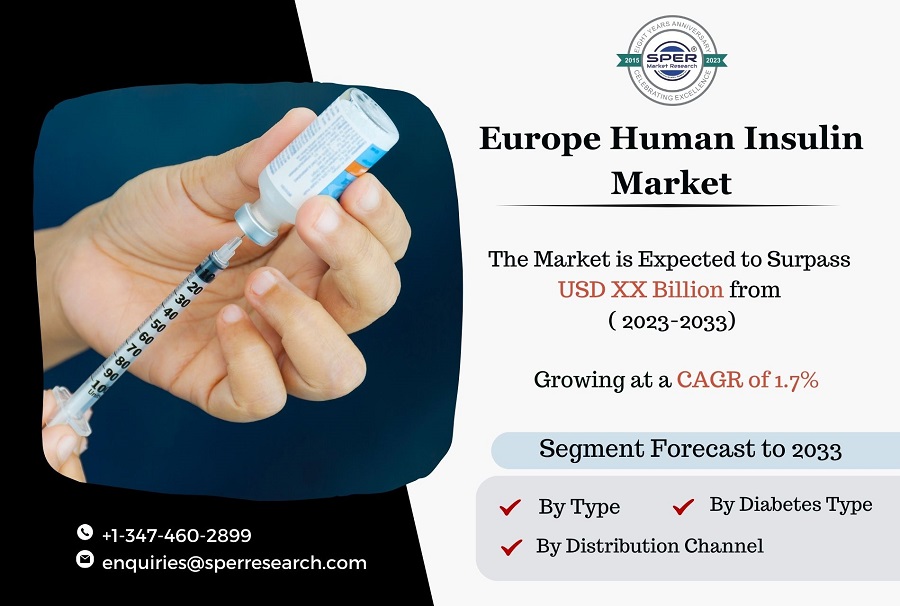Any apparatus used in the diagnosis, treatment, monitoring, or prevention of illnesses or medical disorders is referred to as a medical device. This includes machines, implants, and other similar apparatuses. These gadgets are essential to the healthcare industry because they help medical practitioners provide effective and efficient care. Medical devices can be utilized in a variety of healthcare settings, such as clinics, hospitals, and home care. They can be as simple as instruments or as complicated as machinery.
According to SPER market research, ‘USA Medical Devices Market Size- By Type, By End User – Regional Outlook, Competitive Strategies and Segment Forecast to 2033’ state that the USA Medical Devices Market is predicted to reach USD 349.78 billion by 2033 with CAGR of 6.32%.
The US medical device business has a range of opportunities. The aging population and its associated increases in disability-adjusted life years, the increasing prevalence of chronic conditions, and technical developments in medical equipment are driving market expansion. From an opportunity perspective, the nation’s robust R&D environment, which yields cutting-edge medical items, makes technological innovation a key growth driver. Additionally, the need for medical devices to treat age-related health issues will increase as the US population ages, which may hasten market expansion. The government’s backing and the continuous focus on improving the healthcare infrastructure are key factors in the sector’s growth.
But the industry is also dealing with a lot of challenges. Costs can rise and innovation might be hampered by regulations that prevent new items from being released into the market, such as the stringent FDA approval process. In their efforts to lower the expenses related to medical devices, payers and healthcare providers could exert pressure on growth through cost-cutting initiatives. The fierce rivalry in the market, where many players fight for a bigger share of the market, may put pressure on prices. The healthcare system in the USA is disjointed, complicated, and involves many different parties. It can be difficult to coordinate actions between payers, regulatory agencies, and healthcare providers. . Finally, given the constantly shifting nature of the healthcare landscape—which includes adjustments to reimbursement schedules and policies—industry players need to be adaptable
Request For Free Sample Report @ https://www.sperresearch.com/report-store/usa-medical-devices-market.aspx?sample=1
The Critical medical equipment like ventilators, respiratory support equipment, and diagnostic gadgets saw a spike in demand as a result of the epidemic. In order to meet the spike in demand, producers of vital medical equipment stepped up output, which raised awareness of supply chain resilience. In order to provide resources for COVID-19 patients, some elective medical treatments were cancelled or postponed. The demand for a few non-essential medical gadgets used in elective surgeries and procedures was impacted by this. In 2020, however, the number of people receiving a COVID-19 diagnosis increased because to the expanding patient pool.
Minnesota is known as “Medical Alley,” especially the Minneapolis-Saint Paul metropolitan area. It serves as a center for innovation in healthcare and medical technology, housing a large number of healthcare organizations, research centers, and manufacturers of medical devices.Startups specializing in healthcare technology have emerged, particularly in Silicon Valley. Additionally, some of the market key players are BD (Becton, Dickinson and Company), Abott, Boston Scientific Corporation, F. Hoffmann-La Roche AG, Medtronic, Siemens Healthcare AG, Stryker, Danahe and others.
For More Information, refer to below link:-
USA Medical Devices Market Research Report
Related Reports:
Follow Us –
LinkedIn | Instagram | Facebook | Twitter
Contact Us:
Sara Lopes, Business Consultant – USA
SPER Market Research
+1-347-460-289974









